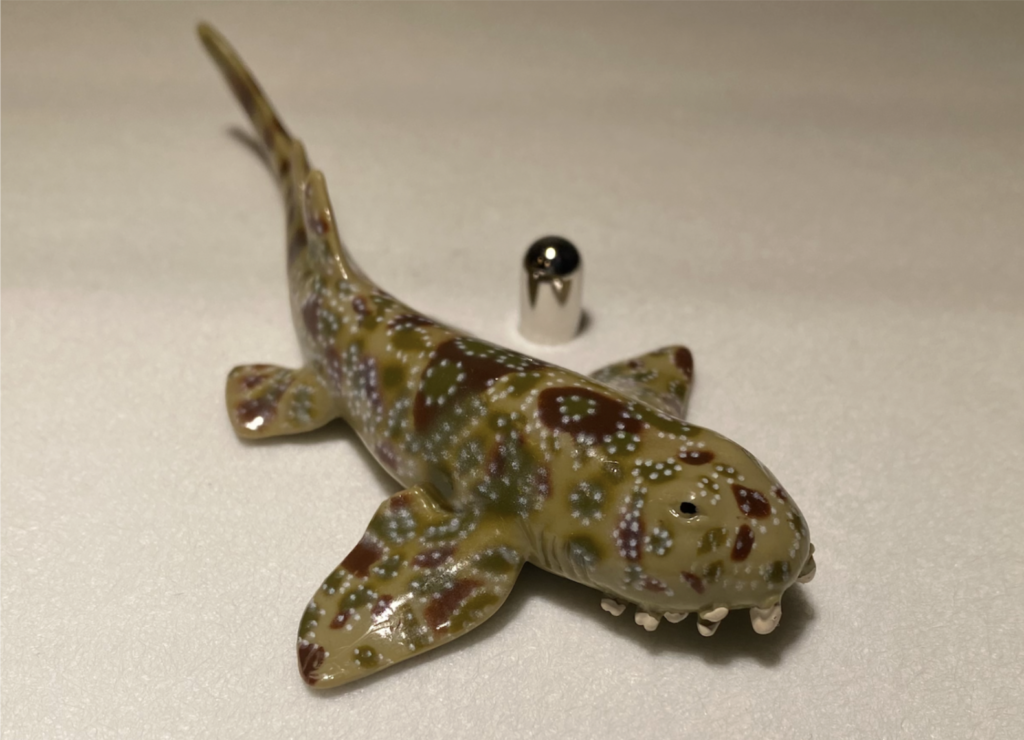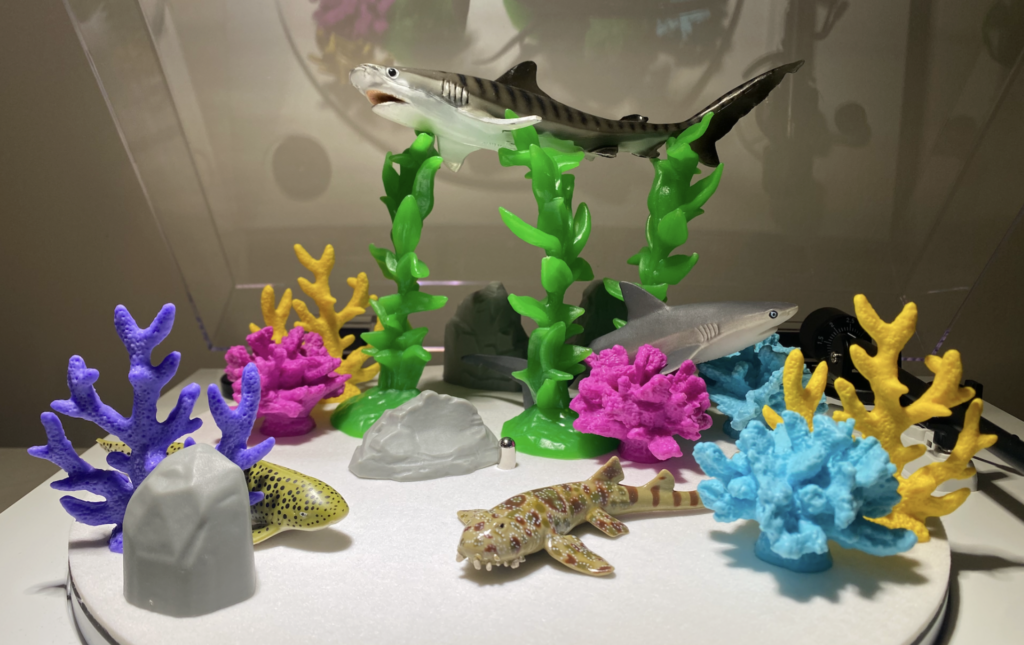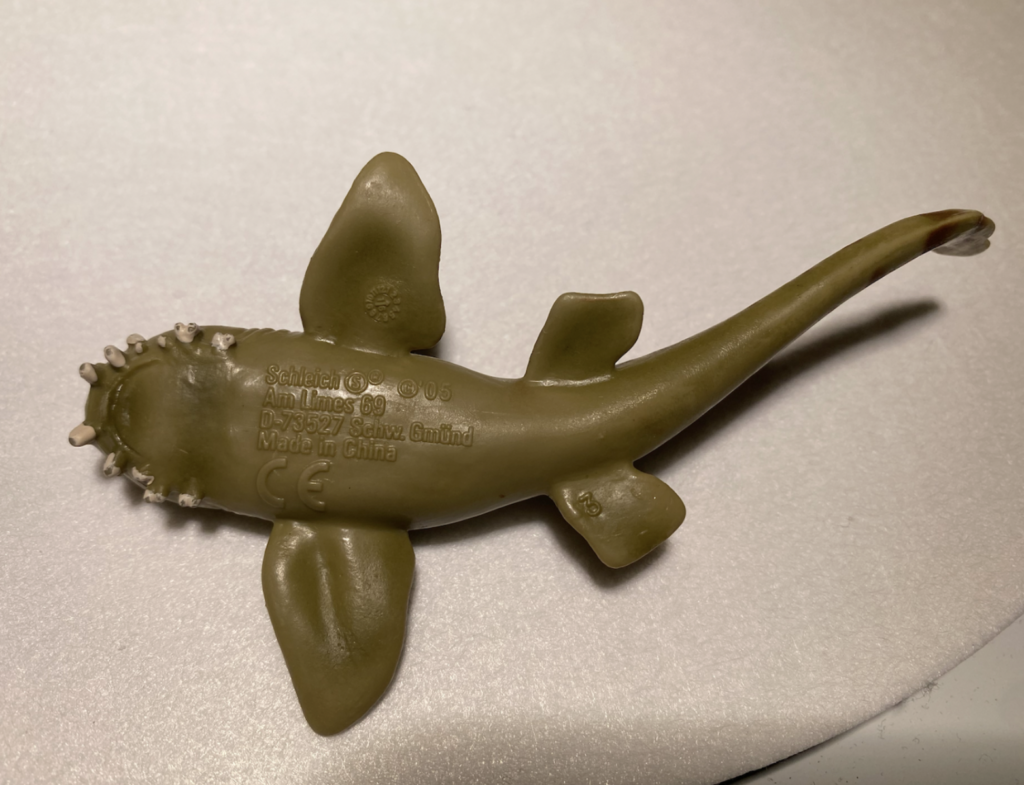Review and images by Alopias superciliosus; edited by bmathison1972
I’m happy to be returning for my second Shark Week; always a pleasure to nerd about obscure sharks! For this year’s installment we are going as far away geographically from my Greenland Shark review last year as possible, “down under” to discuss the weird and wonderful Spotted Wobbegong, Orectolobus maculatus.

When I think of “Australian sharks”, the first sharks that come to mind are wobbegongs. Of the 12 extant species of wobbegongs, 10 species inhabit Australian coastal waters, with 9 species being endemic. Fittingly, their common name is thought to derive from an Australian Aboriginal language, meaning “shaggy beard”, a reference to the sensory lobes around the shark’s mouths (sources conflict- it could also mean “living rock”, which would also be fitting). These lobes are perhaps the shark’s most distinguishing features, giving them a unique bearded and gnarly appearance. These lobes serve several important features for wobbegongs, all benefitting its ambush-predator lifestyle.

Wobbegongs are masters of disguise, the ultimate ambush predators. The lobes around their jaws help the animal blend seamlessly into the lush coral reefs it inhabits, resembling coral and algae. Each species has a unique intricate mottled pattern across their bodies, further helping them blend in. The wobbegong will sit motionless, slowly waiting for unsuspecting reef fish, or fellow sharks, to stray too close. Wobbegongs may use their tail to draw fish in, slowly swishing the tip side to side to mimic a fish. Their tasseled lobes also help attract prey, with inquisitive reef fish swimming close to peck at them, presumably mistaking them for tasty algae. Once prey is lined up, wobbegongs strike quick, shooting their jaws towards their prey. Their short snouts and broad pharynxes create a powerful suction force that sucks smaller prey right down their gullet.
The Spotted Wobbegong is the largest species of wobbegong, growing to a max length of 10.5 ft/3.2m (although most adults are around half that, 5.5ft/1.7m). Its common name refers to the numerous pale rings of dots that decorate the shark’s body. The species is endemic to southern Australia. Spotted Wobbegongs will feed on any species they can ambush, including sea bass, rays, lobsters, and reef and bamboo sharks. Interestingly, it is a very good ambush predator of other ambush predators, preying on scorpionfish, octopus, and fellow wobbegongs, including members of its own species.

Despite their usually sedentary, solo hunting style (and their proclivity for cannibalism), research has shown that Spotted Wobbegongs are social animals that are capable of forming complex social networks. Researchers from Macquarie University in Sydney monitored a group of resident Spotted Wobbegongs in Cabbage Tree Bay Aquatic Reserve in New South Wales. 14 of the 15 wobbegongs tagged for the study spent time with other wobbegongs over a 15-month period. The groupings varied in size, and were sex and age diverse. Individual sharks seemed to have those they liked and disliked, spending a lot more time with some individuals and seeming to actively avoid others.
Wobbegongs, for being as interesting, unique, and iconic a group of sharks as they are, have unfortunately not been shown too much love by figure and toy companies. Besides the Schleich model here, there only exists a “Happy Kin” figure and a rubber stretch toy from DeAgostini, both as well of the Spotted Wobbegong. There are two versions of the Schleich figure; the original version, which was a more orangey-brown, released as an individual figure, and the model here, with a more green-brown color and sharper contrast between the patterns and the base model. The latter came in a set called “Coral Reef Diver 42328”, alongside a rocky baseplate with red sea fan, seagrass, a scallop, a sea star, and a diver figure that scales well with the shark (as an adult on the smaller end of its range). Whichever coloration you go with is personal preference- Spotted Wobbegongs come in a variety of different shades, so both color palettes are plausible.

The intricate patterning of the figure is its most striking and alluring feature. The different layering of shapes and colors is not only eye-catching, but also reminiscent of the actual patterning of Spotted Wobbegongs, with banding and spotting down in the correct regions. Often, when figure companies are faced with depicting mottled, camouflage patterning on an animal, the results can feel random. Here, Schleich clearly put in effort to make the intricate patterning of this figure match the Spotted Wobbegong’s patterning itself. The only major error in the patterning is the odd cutoff after the pelvic fins; the rings of white dots stop on the figure, yet on the real animal, that patterning continues throughout the entire body, even onto the tail. An odd omission, but not one that I think ruins the aesthetics of the figure too much.

The sculpt is overall very well done, and clearly depicts a wobbegong. The pectoral, pelvic, and dorsal fins are all appropriately sized and placed. The model lacks a clearly defined anal fin, but this is somewhat excusable when it comes to wobbegongs; unlike other sharks, where the anal fin is usually just below the second dorsal fin, wobbegong’s’ anal fin is located just below its caudal fin, looking and functioning as another lobe to the tail. As such, that error is easy to overlook. As far as gills, four are depicted on each side but I’ll also not raise an issue about that; the 4th and 5th gill slits on wobbegongs are very close together, so for a model at this scale, that would’ve been hard to depict.

There are three gripes I do have with the model that I think do hold it back from being one of my favorite shark figures. First, it is generally not “flat” enough. Wobbegongs are quite dorsoventrally flattened, as their other common name, “carpet sharks”, suggests. While I don’t think the Schleich model is obnoxiously out of the realm of plausible proportions, it is too tall and cylindrical for the animal. Moving to the head, the mouth has incorrectly been placed on the underside of the animal and not directly on the front of its snout. The tassels found around the head are also not very convincing, a shame since they are one of a wobbegong’s most iconic features. Instead of thin, branching tentacles, the model lobes are short and wide. What really doesn’t sell these for me is the fact that they have been individually painted an off-white coloration. Their shape, placement, and color make it look like the shark has a rather toothy overbite. The decision to paint the lobes is confusing to me, since it would’ve been more realistic (and easier/cheaper) to just leave them the same color as the underlying plastic. I would not be surprised if some mix-up happened between the sculpt team and paint team and those nubs were thought to be teeth by the painters. While I understand the limitations in terms of how thin and delicate things can be on a model of this size (about 4.25in, 10.8cm) that is intended for a toy, I think a company today could vastly improve on the depiction of the tassels and give a wobbegong a more convincing shaggy appearance. This sculpt is almost 20 years old, after all!

While the figure is not perfect, it is definitely the best depiction of a wobbegong of any species that has been created, and is a genuinely beautiful and striking model! The paint scheme is far and away the most intricate of the sharks from Western companies in my collection, on par with the precision paintwork seen in Japanese figures. As such, nitpicks aside, I would definitely recommend the Schleich Spotted Wobbegong for collections, as a beautiful and worthy figure in its own right and as a great way to diversify a shark model collection with such a unique species. This model is unfortunately no longer in production, either individually or as part of the coral reef diver set. For anyone searching for one- I recommend trying to track down the set, as I did; it seems to be more common than finding the shark on its own. Note that “wobbegong” does not appear anywhere on the box/description for the set, so listings for the set won’t show up if you are just looking up “wobbegong”. I am also aware of a AliExpress knock-off version of the figure, which would be much easier to find and cheaper, often listed as a “bamboo shark”, but I cannot attest to the quality of that model.
Disclaimer: links to Ebay and Amazon on the AnimalToyBlog are affiliate links, so we make a small commission if you use them. Thanks for supporting us!




I had this figure and was one of those that I had searched for for a long time. But ultimately I sold it on eBay last year as I did not like just how glossy the finish was. Additionally, AliExpress offers a knockoff that ultimately is identical, but much less glossy which I replaced it with.
I also bought this set just for the wobbegong. No regrets!
How is this one getting a lower rating than the Port Jackson shark?
This is one of my grail figures but it does have some flaws that are hard to look past. It’s the best wobbegong by default but I’m optimistic that we’ll get one from Safari or CollectA someday that will make it obsolete.
I got the original when it first released. Maybe if I’d noticed the colour enhancement I would have picked up the set too.